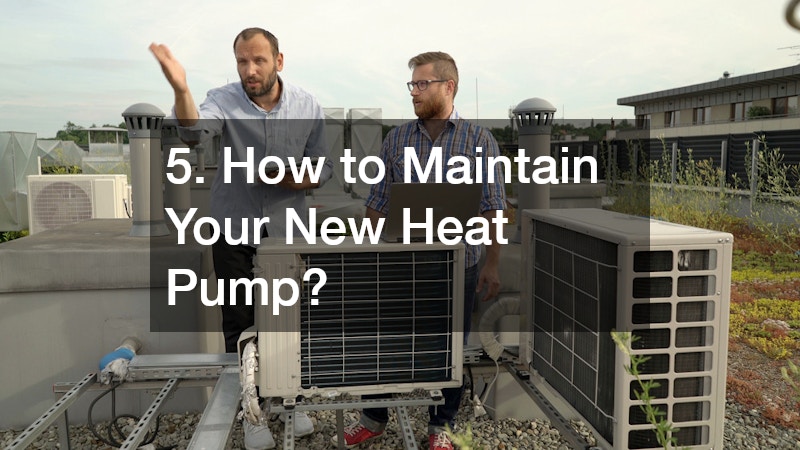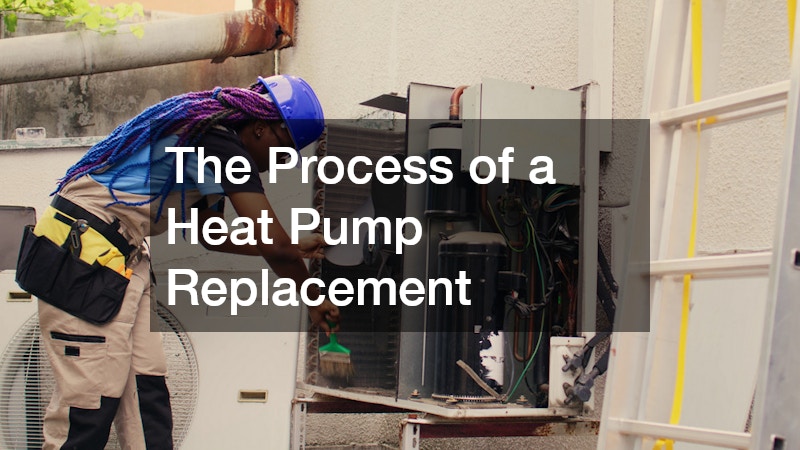Replacing a heat pump is an essential consideration for both residential and commercial property owners. This process not only enhances energy efficiency but also provides long-term cost savings and reduces environmental impact.
1. Why Replace a Heat Pump?
1.1. Common Signs of a Failing Heat Pump
Regularly increasing energy bills and frequent repairs are clear indicators of a failing heat pump. If a heat pump struggles to maintain a consistent temperature or makes unusual noises, these are additional signs of inefficiency.
Diminished heating or cooling performance can lead to discomfort within the home or business. Addressing these issues early can prevent unexpected breakdowns and costly emergency repairs.
Another symptom is excessive ice build-up on the unit even during mild weather conditions. Such issues often signal that the refrigerant is low or there are airflow problems.
1.2. Benefits of Heat Pump Replacement
Upgrading to a new heat pump significantly improves energy efficiency, leading to lower utility bills over time. Newer models are often quieter and come with advanced features that enhance user experience.
Replacing an outdated pump minimizes the environmental footprint by consuming less energy. Innovations in technology ensure that newer heat pumps meet stricter efficiency standards.
Considering the long-term savings and environmental benefits, the initial investment in replacement becomes an attractive proposition. Consumers also benefit from various rebates and incentives for energy-efficient systems.
2. What is the Best Time for a Heat Pump Replacement?
2.1. Seasonal Considerations
Scheduling a replacement during off-peak seasons could result in better availability of technicians. During these periods, prices for installation services are often lower due to reduced demand.
Heat pumps replaced in the spring or fall ensure that they’re ready before the extreme temperatures of summer or winter set in. This proactive approach can prevent service disruption when heating or cooling is critically needed.
Spring and fall are optimal times for replacements as the mild weather reduces dependency on HVAC systems. This adjustment period allows for efficient system integration without compromising comfort.
2.2. Aging and Technological Advancements
Heat pumps have an average lifespan of 10-15 years, after which efficiency often declines significantly. As technology evolves, newer models offer better performance and energy savings.
Upgrading sooner ensures that homeowners are not missing out on the technological advancements in HVAC systems. It also mitigates the risk of unexpected system failures and subsequent inconveniences.
Moreover, manufacturers are continually innovating to produce pumps that operate more sustainably. Thus, faster adoption of newer models aligns with eco-friendly initiatives.
3. How to Choose the Right Heat Pump?
3.1. Evaluating Different Brands and Models
Researching various brands and models is crucial to finding a reliable heat pump that suits specific needs. Consumers should compare efficiency ratings, warranties, and customer reviews.
When selecting a heat pump, pay attention to the SEER (Seasonal Energy Efficiency Ratio) rating to ensure high energy efficiency. Reputable brands often offer more comprehensive warranties reflecting their confidence in product durability.
It’s also advisable to consult with professionals for recommendations tailored to your location and energy requirements. This informed approach often results in the best balance between cost and functionality.
3.2. Size and Capacity Considerations
Proper sizing of a heat pump is critical for maximizing efficiency and comfort in your space. An undersized unit will struggle to maintain desired temperatures, while an oversized one will cycle on and off too frequently.
Consulting with a professional for an accurate assessment will help determine the right capacity for your home or business. Ensuring the correct size adheres to recommended guidelines will prolong the system’s lifespan.
Factors such as the building’s insulation, windows, and orientation should be taken into account during this evaluation. A well-sized unit consumes less energy, effectively reducing overall operating costs.
4. What Does the Replacement Process Involve?
4.1. Preparatory Steps and Initial Assessment
Before replacement, a thorough assessment by a professional can identify any existing issues or challenges with the current setup. This evaluation is crucial for selecting a compatible new unit and ensuring an efficient installation process.
The professional will also consider ductwork conditions and assess whether modifications are necessary. Such evaluations prevent potential future problems and optimize the performance of the new heat pump.
Accurate assessment upfront ensures that the installation runs smoothly and meets all required specifications. This preliminary stage lays the foundation for a successful upgrade, minimizing inconvenience.
4.2. Installation Process and Time Frame
The installation process typically includes removing the old unit, preparing the site, and installing the new heat pump. The timeframe can vary depending on the complexity of the system and any additional upgrades needed.
Professional installers are equipped to handle all aspects of the installation, from electrical connections to testing system performance. This ensures that the system is operating correctly and efficiently from the start.
Homeowners should plan for potential downtime during installation. Being prepared with backup heating or cooling solutions can help manage comfort levels until the new system is fully operational.
5. How to Maintain Your New Heat Pump?
5.1. Regular Maintenance and Check-ups
Regular maintenance is key to ensuring the longevity and efficiency of your new heat pump. Scheduling annual inspections and servicing can help identify and address minor issues before they become major concerns.
Routine tasks such as cleaning or replacing filters and ensuring clear airways can significantly improve system performance. A well-maintained heat pump can provide dependable service and better indoor air quality.
5.2. Troubleshooting Common Issues
Familiarizing oneself with common heat pump issues, such as failure to start or inadequate heating, can assist in early troubleshooting. Addressing these problems early prevents escalation into more complicated repairs.
Simple solutions like resetting the system, checking power connections, or adjusting settings can resolve many minor issues. Documenting performance discrepancies for reference during professional service visits can be helpful.



